Technologies
What Apple’s ‘Wonderlust’ Event Invite Could Tell Us About the iPhone 15
Commentary: By examining the title and graphic for the next Apple event, we can speculate about what’s coming to the next iPhone.
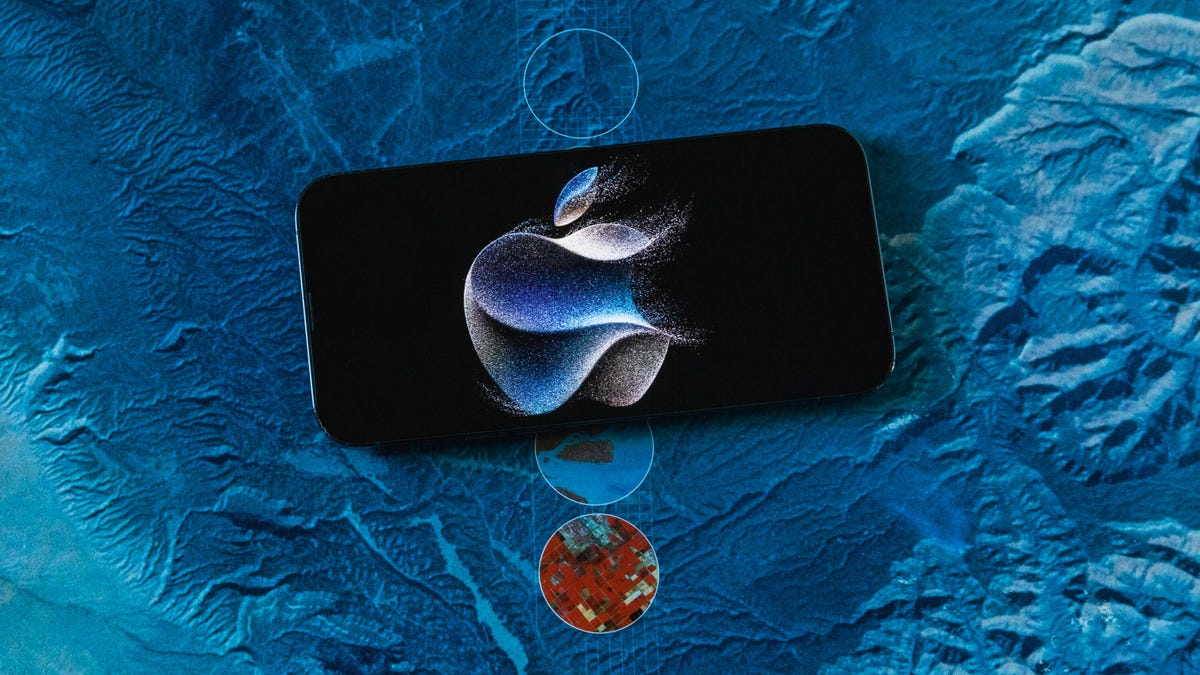
Apple’s «Wonderlust» event is set for Sept. 12, and the company’s invitation could be our first «official» clue hinting at the rumored iPhone 15. We’ve been collecting rumors about the gadget for months, but Apple sometimes drops an early hint about its September event into the invite. This doesn’t always mean there are true connections between what’s said and shown in the invitation and what actually emerges at the show, but the invite creates a jumping off point for discussing what we think Apple might spotlight.
See also
Examining Apple’s ‘Wonderlust’ invite
Let’s start by thinking about the name: Wonderlust. With this tweak of «wanderlust,» Apple appears to be invoking a travel theme. And it’s no stretch to say phones are essential travel companions: We use them for photography, GPS, looking up where we want to eat — there are endless possible features that could be developed with just travel in mind.
Moving onto the invitation’s design, we get a disintegrating graphic that shows a blue-and-sand-colored Apple logo being blown apart by an invisible force — perhaps the wind? Or perhaps the pieces of the Apple logo are being pulled together via a magnetic attraction? Either way, an atmospheric element might be what we could extrapolate from this design choice, and phones by their very nature are wireless devices that create constant connections through the atmosphere.
(It’s also true that blue and gray have been iPhone colors in the past, and maybe this logo’s colors provide an early look at what a few of the iPhone 15 models might look like.)
I should reiterate that these thoughts are speculation, but they’re enough to warrant a closer look at how Apple could improve the iPhone 15. The following things all tie into the themes of travel and atmosphere, but they’re also areas in which Apple could demonstrate improvement where rival phones have already staked out territory, or they’re realms closely related to iOS 17 features we already learned about at Apple’s WWDC event.
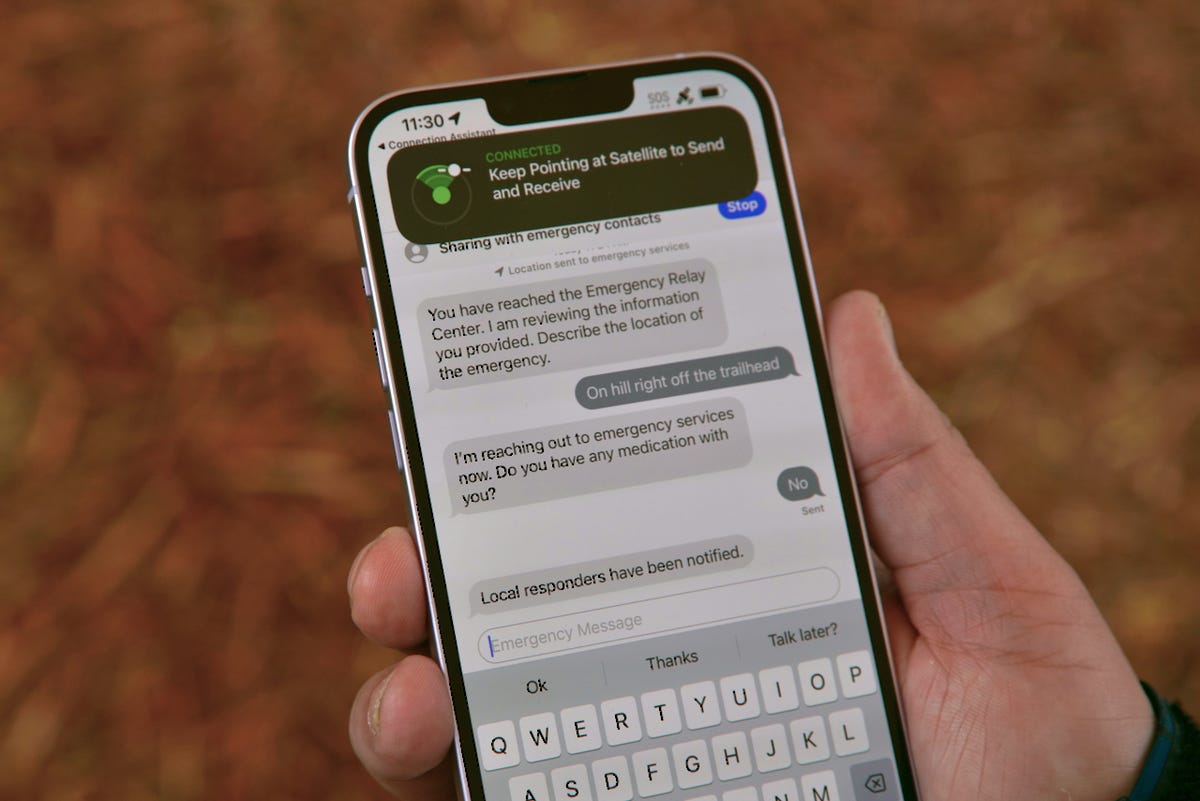
Even more satellite communication
Tying into both travel and the atmosphere, Apple could make new announcements related to the satellite connectivity features first launched with the iPhone 14 line. Right now Apple’s efforts are focused on its Emergency SOS feature, which lets people with a clear view of the sky use the iPhone to text emergency services where cellular service isn’t available. The iPhone 14 line comes with two years of free emergency satellite service.
Though Apple kicked off bringing satellite service to phones, it won’t be alone for long. Qualcomm, Samsung and other companies have announced plans to bring their own spin to satellite connectivity, including voicing their intention to allow for nonemergency communication over those airwaves.
On this year’s stage, Apple could announce new improvements to its satellite connectivity features, perhaps allowing for an iMessage service while in the wilderness, or limited voice calls.
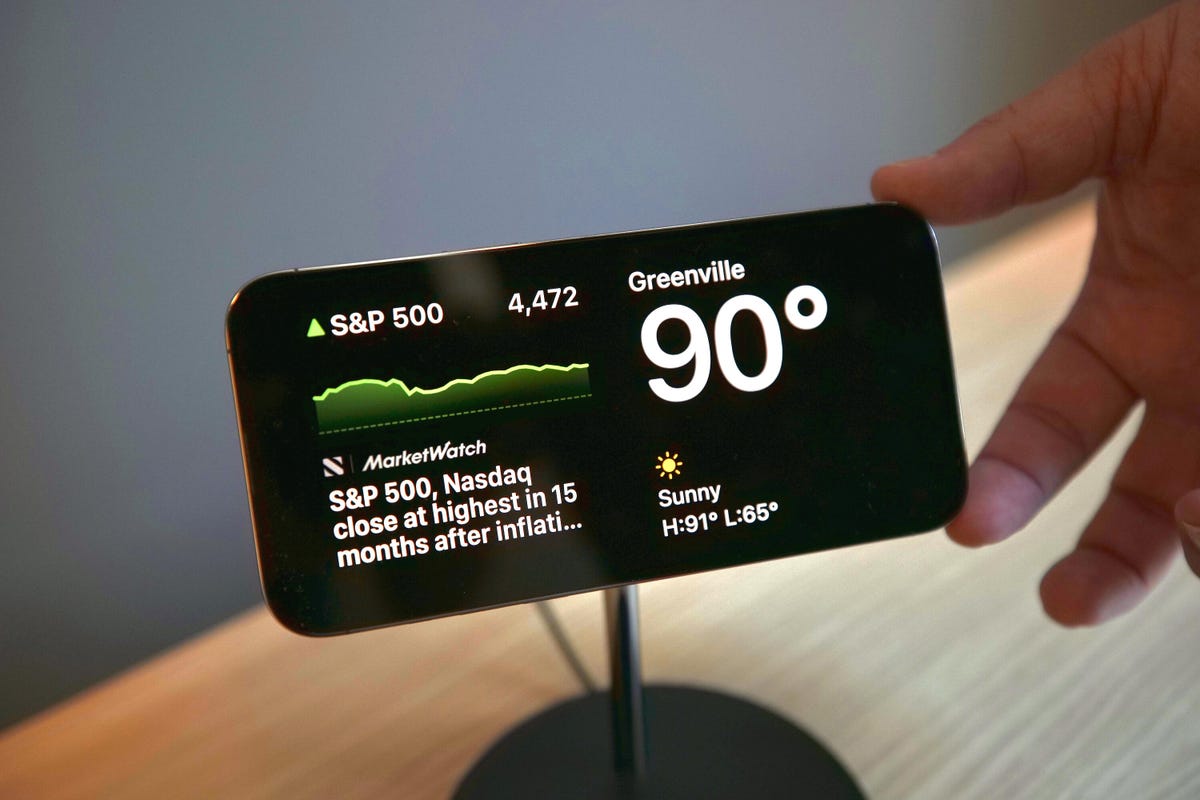
Faster wireless charging and more MagSafe
Apple’s MagSafe made a splash when it debuted alongside the iPhone 12 in 2020, very literally snapping separate objects together for enhanced wireless charging and stackable accessories. The particle effect in our Apple event invitation — whether it means the logo is being pulled together or apart — could indicate MagSafe as well as the wireless charging feature that MagSafe supports.
And if so, it’s about time. Apple has room to improve the iPhone’s wireless charging speeds, especially when compared with those of rival flagship Android phones. Currently, Apple supports 7.5-watt wireless charging speeds with a regular Qi wireless charger, and 15W speeds with an officially certified MagSafe charger. Meanwhile, Google’s Pixel 7 can wirelessly charge at 12W on a Qi charger with an extended power profile, and that bumps up to 20W when using Google’s Pixel Stand that has a built-in fan. Previous OnePlus phones can get 15W charging from Qi wireless chargers with an extended power profile, and a ludicrously fast 50W on their official stand, thanks to the use of a split battery. All this leaves a lot of room for growth for Apple, and matching Google’s speeds, at least, would be a solid step in making wireless charging more useful on the iPhone.
A new Qi2 wireless charging standard is in the works though, and Apple is a member of the Wireless Power Consortium that’s developing it. Whenever that standard is ready, that might lead to faster wireless charging speeds on future iPhone models.
Regardless of charging, there’s likely even more room to grow MagSafe into a modular accessory platform. Maybe Apple could create a MagSafe dock that instantly starts an AirPlay session with a TV. Or create an attachable projector like Motorola once tried with the Moto Z phone line. How about a portable HomePod speaker that snaps right onto your phone, similar to a number of magnetic speakers that already exist on Amazon? There’s still a lot of untapped potential for MagSafe.
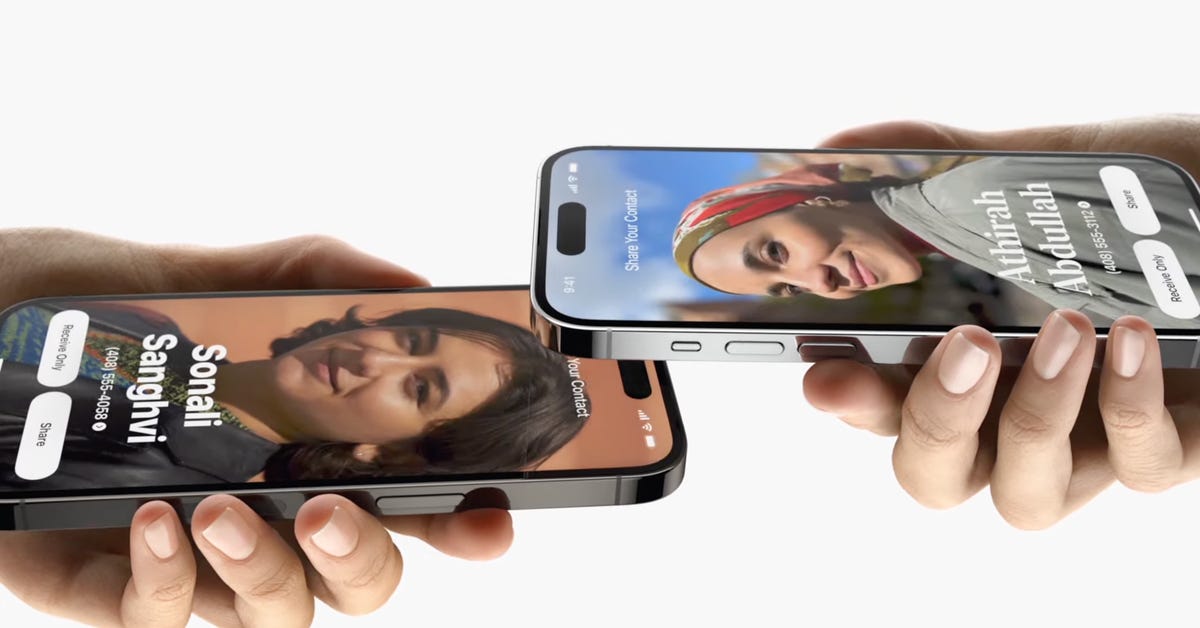
NameDrop and new ways to share in person
Another atmospheric idea starts with an iOS 17 feature we already know: NameDrop. This feature lets you quickly share contact information with someone in person by bringing two iPhones together. But Apple could do so much more with local wireless sharing.
For instance, Apple already allows for sharing iPhone audio between two different sets of AirPods. What if this wireless sharing expanded SharePlay, allowing for simultaneously playing music and video across multiple phones at once — without being on a FaceTime call.
This could be instantly useful if you wanted to share a YouTube video with a friend without having to hand over your phone. Or if you wanted to create a quick surround-sound system by syncing five iPhones together to play music during a dinner party, since your phones are probably sitting on the table anyway.
These all could be natural extensions of other features we already know are on the way. For instance, FaceTime on Apple TV will use its own wireless magic to connect an iPhone’s camera and microphone for video calls. Why not think even bigger and let multiple iPhones share even more media, just by being right next to each other?

Using your camera to scan even more places
Returning to travel, Apple’s Visual Look Up is already capable of identifying landmarks, plants and pets, but you need to move over to the Photos app to take advantage of those features. Perhaps the next iPhone and iOS 17 could speed this, and let you start scanning these items directly from the camera app.
This would bring Visual Look Up into better parity with Google Lens, which quickly identifies items for you without the need to save them into your camera roll. Maybe you could scan a restaurant while you were standing in front of it, and then get its menu. Or scan a friend’s shirt, and then find it on sale to get it yourself. These scenarios are already possible with Google Lens, making this a very noticeable way for Apple to bring more features into its camera app.
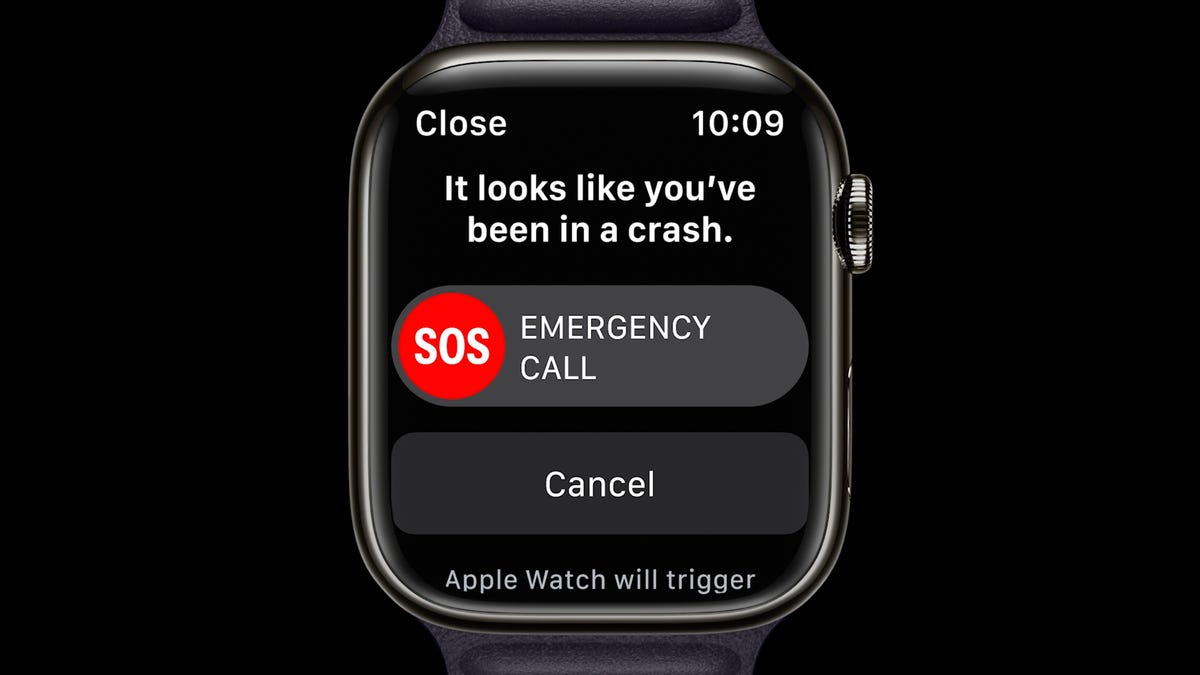
Expanding safety features
When you travel in a vehicle, Apple’s new Crash Detection features could provide an essential lifeline in the event of an accident. As it stands, the feature can automatically contact emergency services should a supported iPhone or Apple Watch detect such an event. But perhaps Apple could augment this further by taking advantage of other sensors within the iPhone or a paired up Apple Watch to activate a heart rate sensor at the same time to provide a quick health check to the wearer.
Or maybe Apple could expand its Crash Detection feature so it shares your physical location with your emergency contacts. This could be similar to Apple’s new Check-In feature, which will proactively send alerts when friends or family make it home safely. And maybe it’s already worthwhile to expand this feature for emergency situations, like being unexpectedly taken to the hospital.
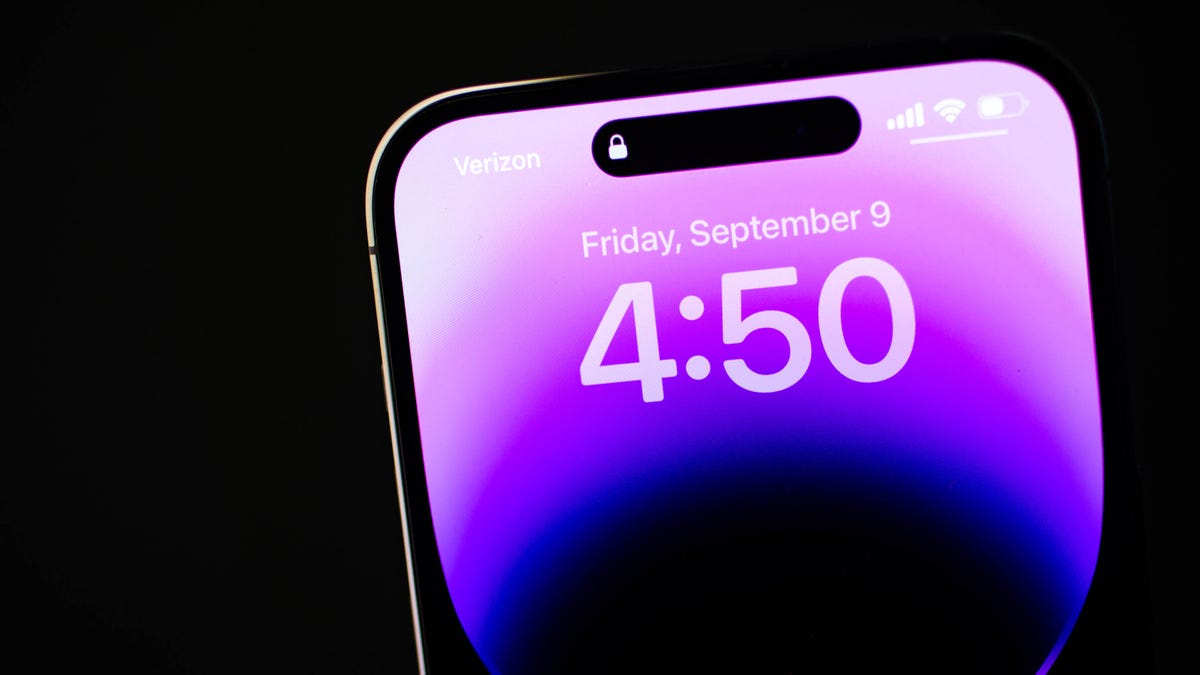
Other iPhone 15 rumors we’re watching
Though we don’t have any solid evidence that the above ideas are coming to the iPhone 15, these are all areas where Apple could improve.
The iPhone 15 rumor mill is a busy one though, and even without an invitation to pore over, we’re monitoring the possibility of a USB-C port arriving to replace Lightning, seeing if the new Dynamic Island will expand to every iPhone model after its debut on the iPhone 14 Pro, and wondering whether the iPhone 15 Pro will move toward solid-state volume and power buttons.
Whatever’s ultimately on the way to Apple’s iPhone 15, we’ll likely find out for sure when Apple’s event begins on Sept. 12.
Technologies
Fubo Loses NBCUniversal Channels, Putting Your NBA Games in Jeopardy
Sound the carriage dispute Klaxon: Some network programming has disappeared from the streaming service after content negotiations fell through.
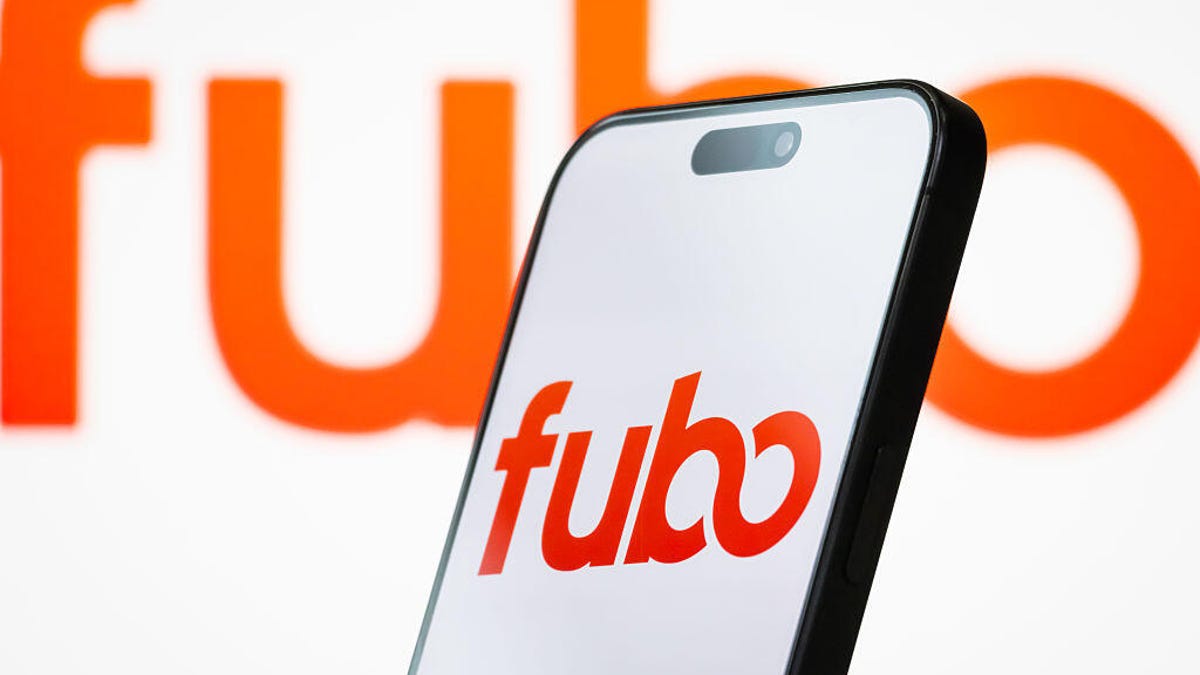
If you’ve noticed your favorite show has recently gone missing from Fubo, it’s probably because an entire block of programming just disappeared from the site’s channel lineup.
The live TV streaming service is engaged in a carriage dispute with NBCUniversal, a media company whose subsidiaries include NBC News, Universal Studios, Peacock, Telemundo and Illumination, among other brands.
On Nov. 21, NBCUniversal pulled all of its networks from Fubo. This is an especially big deal for sports watchers on the streaming service, since the Fubo Sports subscription — which began earlier this year — depends on the licensing agreement with NBCUniversal. However, viewers can still access sports content on networks like ESPN, CBS and ABC.
Fubo released a statement on Tuesday, alleging the media giant is engaging in «discriminatory tactics» that are harming the streamer’s subscribers.
«NBCU is discriminating against Fubo and our subscribers,» the statement says. «They allowed YouTube TV and Amazon Prime to integrate Peacock directly into their channel store, but refused to give Fubo the same rights.»
Don’t miss any of our unbiased tech content and lab-based reviews. Add CNET as a preferred Google source.
Fubo says NBCUniversal is trying to force a multiyear deal for certain channel packages under the media giant’s new spin-off media company, Versant, and that it’s trying to upcharge on the Fubo Sports subscription by adding «expensive, non-sports channels» into the agreement, increasing the cost.
According to NBCUniversal’s website, the Versant brands include CNBC, E!, MS Now, SyFy and USA, among other channels.
NBCUniversal did not respond to a request for comment.
Fubo says that it’s willing to move forward without NBCUniversal content if an agreement cannot be reached.
«Fubo is committed to bringing its subscribers a premium, competitively-priced live TV streaming experience with the content they love,» its statement concludes. «That includes multiple content options, including a sports-focused service, that can be accessed directly from the Fubo app.»
Fubo recently became an affiliate of The Walt Disney Company, following its merger with Hulu’s live TV platform in October. It’s unclear whether this merger affected content agreement negotiations with NBCUniversal. Fubo did not respond to a request for comment on this.
Technologies
Spotify Will Reportedly Get More Expensive in the US Next Year. Here’s What to Expect
The music streaming service will reportedly raise prices again after subscription rate hikes in other regions.
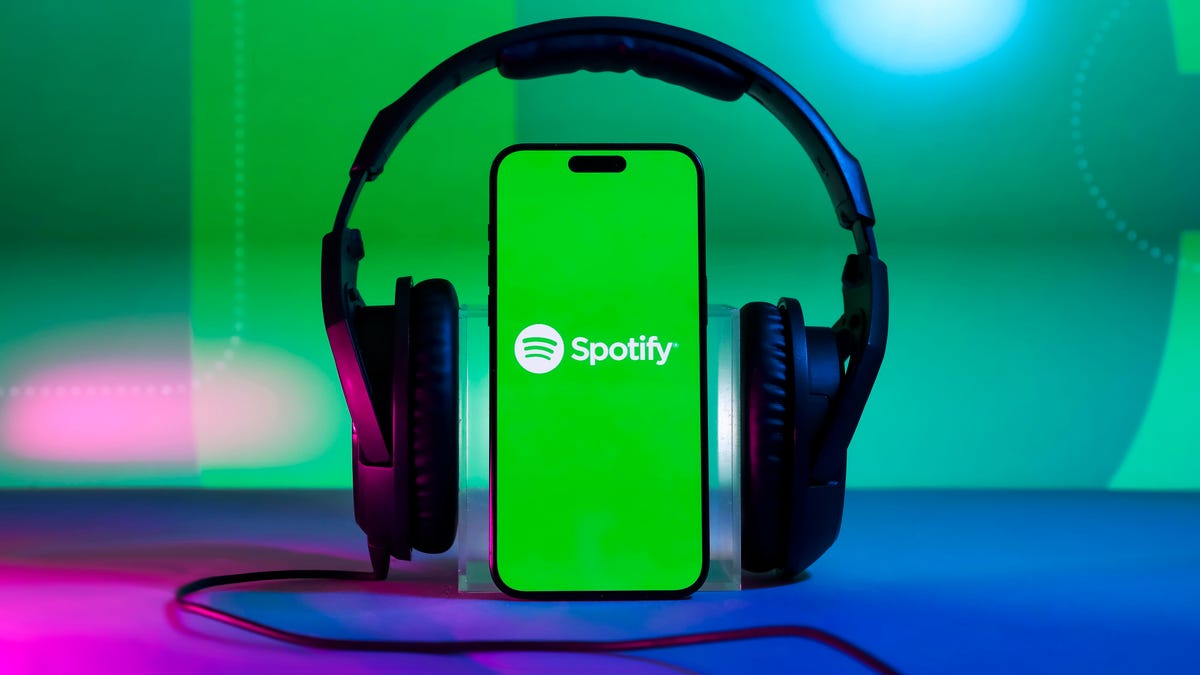
After announcing it is raising prices in regions including Europe, South Asia and Latin America, Spotify is reportedly about to increase prices again in the US.
The US is included in the latest Spotify price hike on its Premium services starting in early 2026, according to the Financial Times, which cited three sources familiar with the streaming music company’s dealings. For now, the least expensive Premium plans in the US start at $12, but the price hike would likely put it in line with the other regions where the Premium plan costs about $14 a month.
Don’t miss any of our unbiased tech content and lab-based reviews. Add CNET as a preferred Google source.
Spotify also offers a Premium Family plan that covers six people in the same household for $20 and plans for students ($6 a month bundled with Hulu) and couples ($17 a month). Spotify also offers a Basic plan that does not include access to audiobooks for $11 a month. A representative for Spotify did not immediately respond to a request for comment.
A steady increase
If the report is accurate, this would be the third price increase on Premium plans in the US since 2023. Before those hikes, Premium plans were $10, but Spotify raised its minimum price by $1 in 2023 then again in 2024.
Just this week, Spotify added the ability to seamlessly import playlists from other music services including Apple Music and Tidal.
Spotify has faced some controversy this year, including some music acts abandoning the platform and some customers canceling subscriptions over advertising for Homeland Security’s ICE program. CNET has a guide for canceling your Spotify subscription.
The company is the market leader among music streaming apps with about 32 percent market share as of the end of 2024.
Technologies
Some Rad Power Bike E-Bike Batteries Can Catch Fire, Consumer Protection Agency Warns
The company declined to offer full replacements or refunds, citing financial constraints.
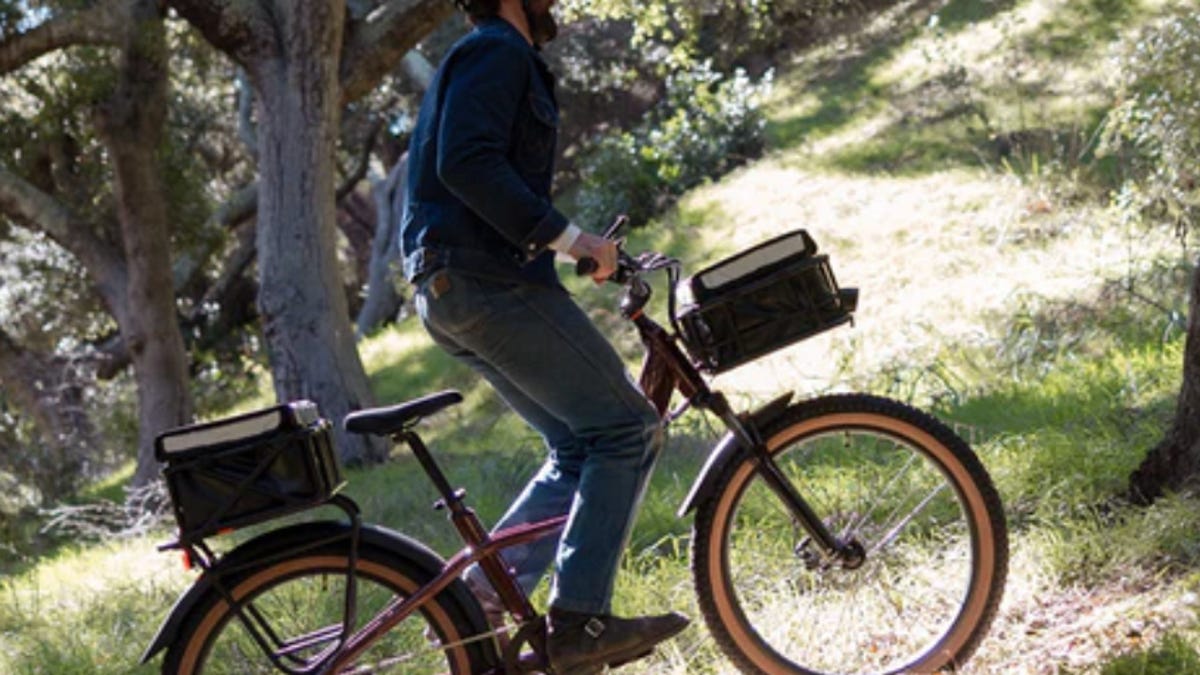
The US Consumer Product Safety Commission is warning that some lithium‑ion batteries used in certain e‑bikes made by Rad Power Bikes pose a serious fire hazard that could lead to injury or even death. The agency says the batteries, identified by model numbers RP‑1304 and HL‑RP‑S1304, can unexpectedly ignite or explode, especially if the battery or its harness has been exposed to water or debris.
The recall has been marked as a «public health and safety finding» because Rad Power Bikes has declined to offer full replacements or refunds for all consumers, citing financial constraints.
CPSC reports 31 incidents of fire involving these batteries, including 12 cases where property damage totaled approximately $734,500. Some of these fires occurred even when the battery was not in use or charging, but was in storage.
Don’t miss any of our unbiased tech content and lab-based reviews. Add CNET as a preferred Google source.
The batteries were sold as either original or replacement units for several Rad Power Bikes e-bike models and were available through RadPowerBikes.com, Best Buy and independent bike shops nationwide.
«Rad informed the agency that its demand to replace all batteries, regardless of condition, would immediately put Rad out of business, which would be of no benefit to our riders,» the company said in a statement issued with the CPSC warning. «Rad is disappointed that it could not reach a resolution that best serves our riders and the industry at large. Rad reminds its customers to inspect batteries before use or charging and immediately stop using batteries that show signs of damage, water ingress, or corrosion, and to contact Rad so we can support our riders.»
The CPSC’s statement does not apply to all Rad batteries, and does not apply to its Safe Shield or semi-integrated batteries.
Consumers who have one of the affected batteries are urged to stop using it immediately and dispose of it properly via a household hazardous‑waste collection center. Do not place the batteries in standard curb-side recycling or trash bins, and refrain from reselling them.
-

 Technologies3 года ago
Technologies3 года agoTech Companies Need to Be Held Accountable for Security, Experts Say
-

 Technologies3 года ago
Technologies3 года agoBest Handheld Game Console in 2023
-

 Technologies3 года ago
Technologies3 года agoTighten Up Your VR Game With the Best Head Straps for Quest 2
-

 Technologies4 года ago
Technologies4 года agoBlack Friday 2021: The best deals on TVs, headphones, kitchenware, and more
-

 Technologies4 года ago
Technologies4 года agoVerum, Wickr and Threema: next generation secured messengers
-

 Technologies4 года ago
Technologies4 года agoGoogle to require vaccinations as Silicon Valley rethinks return-to-office policies
-

 Technologies4 года ago
Technologies4 года agoOlivia Harlan Dekker for Verum Messenger
-

 Technologies4 года ago
Technologies4 года agoiPhone 13 event: How to watch Apple’s big announcement tomorrow
